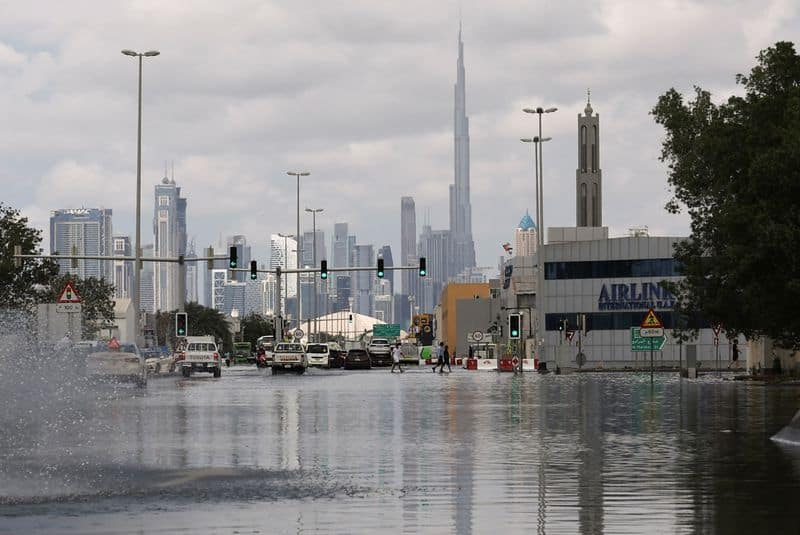The recent floods in Dubai showed us a big problem: cities struggle to deal with too much rain. This is because the way we build cities often blocks natural ways for water to go when it rains a lot. Dubai’s flooding is a sign of a global issue in how we design cities.
The Problem with Old Ideas
Cities like Dubai were built on land that used to be empty, but the way we developed them didn’t think about how water naturally flows. When it rains heavily, water can’t soak into the ground like it should, leading to floods.
More People, More Problems
As cities grow and more people live in them, there’s more water runoff from rain. This adds to the challenge of managing water, especially when cities also have to deal with waste from more people.
Climate Changes and Rain
Last week, Dubai got a lot of rain, more than it usually gets in a year. This kind of heavy rain is becoming more common, and it’s making cities rethink how they handle water during storms.
Concrete vs. Nature
Dubai’s transformation from natural soil to concrete buildings has made it harder for water to be absorbed. This means when it rains a lot, there’s nowhere for the water to go, causing flooding.
Building a Resilient Future
The floods in Dubai are a warning for cities everywhere to plan better for heavy rain and climate changes. Using smarter drainage systems, green spaces, and designs that work with nature can help prevent future floods.
Conclusion: Time for Action
We need to rethink how we build our cities to cope with climate challenges. It’s not just about making cities bigger but making them smarter and more resilient to handle extreme weather events like floods.
Ramesh & Associate’s Dubai’s Best Architecture Firm is committed to promoting sustainable and resilient city design in the face of climate change challenges.


